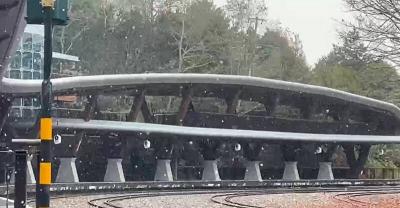National Central University (NCU) yesterday formally named a planetoid it discovered two years ago after Taiwan’s highest mountain.
The formal naming came after the school secured approval from the International Astronomical Union (IAU).
NCU vice president Liu Gin-rong (劉振榮) told a press conference that the IAU had passed the proposal to name the asteroid “Yushan.”
The asteroid is the first to be named after a Taiwanese mountain, in addition to its permanent serial number, No. 185546, given by the IAU’s Committee for Small Body Nomenclature.
Liu said the university chose the name “because our [Lulin] observatory is located on Yushan.”
“Over the years, Yushan National Park Headquarters has been very helpful to us. Since Yushan has taken care of us for 20 years and is competing in the [online competition for the] New Seven Wonders [of the natural world], we hope to make a contribution” by naming the planetoid “Yushan,” Liu said.
HEAVENLY YUSHAN
The research team at the Lulin observatory also estimated that the planetoid is similar in size to the 3,952m high Yushan.
The planetoid was discovered by Ye Quanzhi (葉泉志), a student at Sun Yat-sen University in Guangzhou, China, and Lin Chi-sheng (林啟生), an assistant at NCU’s Lulin Observatory, on Dec. 28, 2007.
TOP ASTEROID RESEARCH
The distance between the Earth and the asteroid is about 300 million kilometers. Its orbit passes between Mars and Jupiter and it can only be seen using a professional telescope.
Liu said the school launched a project to observe asteroids in 2006 and that the program had produced interesting results.
“Since we initiated the project, we have discovered about 800 planetoids in just a few years, which is very uncommon. This has made us the most active country in asteroid discovery,” Liu said.

US President Donald Trump said "it’s up to" Chinese President Xi Jinping (習近平) what China does on Taiwan, but that he would be "very unhappy" with a change in the "status quo," the New York Times said in an interview published yesterday. Xi "considers it to be a part of China, and that’s up to him what he’s going to be doing," Trump told the newspaper on Wednesday. "But I’ve expressed to him that I would be very unhappy if he did that, and I don’t think he’ll do that," he added. "I hope he doesn’t do that." Trump made the comments in

NOT AN OPENING: Trump’s violation of international law does not affect China’s consideration in attacking Taiwan; Beijing lacks capability, not precedent, an official said Taiwanese officials see the US’ capture of the president of Venezuela as a powerful deterrent to Beijing’s aggression and a timely reminder of the US’ ability to defeat militaries equipped with Chinese-made weapons. The strikes that toppled Venezuelan President Nicolas Maduro signaled to authoritarian leaders, including Chinese President Xi Jinping (習近平), US President Donald Trump’s willingness to use military might for international affairs core to US interests, one senior official in Taipei’s security circle said. That reassured Taiwan, the person said. Taipei has also dismissed the idea that Trump’s apparent violation of international law could embolden Beijing, said the official, who was not

A cold surge advisory was today issued for 18 cities and counties across Taiwan, with temperatures of below 10°C forecast during the day and into tonight, the Central Weather Administration (CWA) said. New Taipei City, Taipei, Taoyuan and Hsinchu, Miaoli and Yilan counties are expected to experience sustained temperatures of 10°C or lower, the CWA said. Temperatures are likely to temporarily drop below 10°C in most other areas, except Taitung, Pingtung, Penghu and Lienchiang (Matsu) counties, CWA data showed. The cold weather is being caused by a strong continental cold air mass, combined with radiative cooling, a process in which heat escapes from

Snow this morning fell on Alishan for the first time in seven years, as a strong continental cold air mass sent temperatures plunging across Taiwan, the Central Weather Administration (CWA) said. The Alishan weather station, located at an elevation of about 2,200m in central Taiwan, recorded snowfall from 8:55am to 9:15am, when the temperature dropped to about 1°C, the CWA said. With increased moisture and low temperatures in the high-altitude Alishan area, the conditions were favorable for snow, CWA forecaster Tsai Yi-chi (蔡伊其) said. The last time snow fell at the Alishan weather station was on Jan. 10, 2018, while graupel fell there